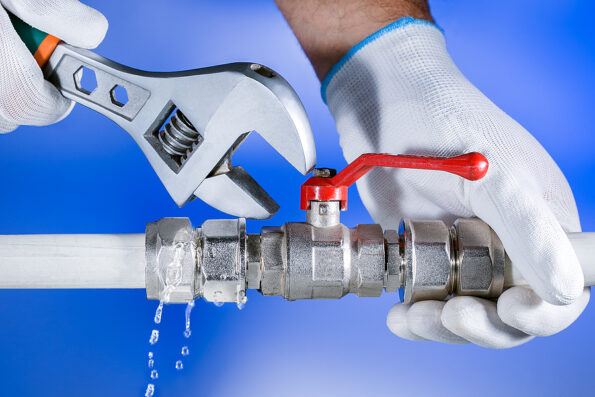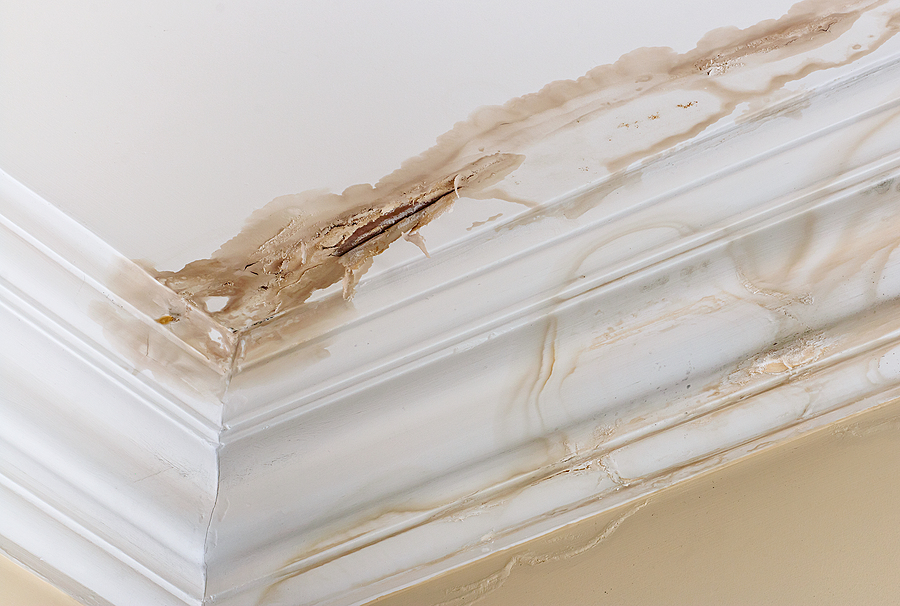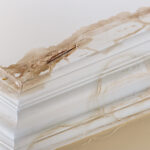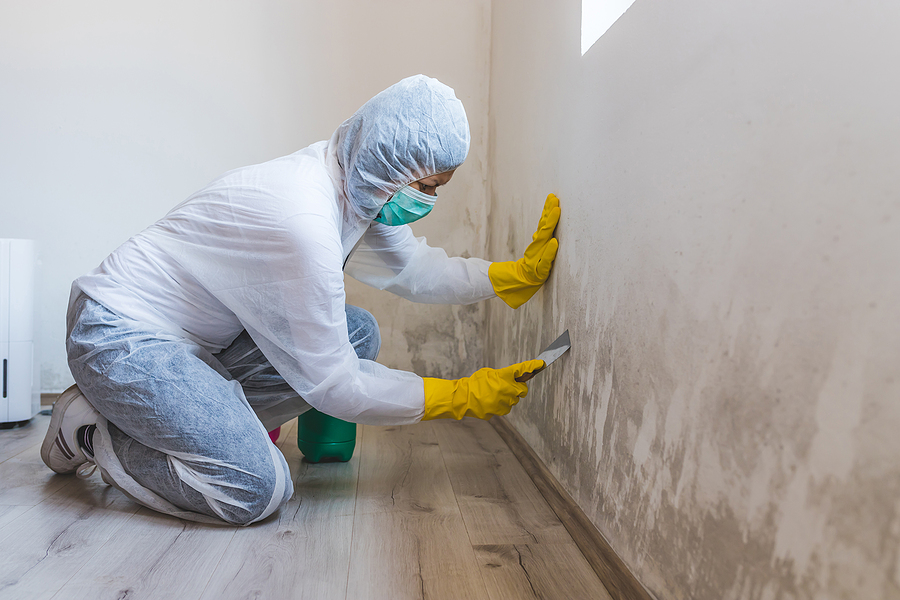A plumbing leak can cause significant water damage and necessitate expensive restoration services. For instance, a hidden water leak may cause the drywall to become wet.
If drywall has been wet for over 48 hours, the only remedy is removing and replacing it is the only remedy. Changing the wet insulation is also necessary. Otherwise, you’ll soon be dealing with mold and mildew problems. Furthermore, if spores spread into the air, they may cause health problems for the building’s inhabitants.
Water similarly damages laminate floors, hardwood planks, furniture, and rags. Standing water can be an electrical hazard and contribute to dry rot.
So, how can you guard against plumbing leaks, given their damaging effects? It helps to know what can cause leaky pipes, and here are 12 common causes:
- Pipe corrosion & failure
For many decades, galvanized steel pipes were used for water supply, drainage, and gas supply. Copper pipes can be similarly found in a lot of homes and commercial buildings. While they are more resistant to corrosion due to the formation of limescale inside the copper pipe, they can still corrode over many years of use, resulting in pinhole leaks.
Metal pipes are becoming less common in newer homes. But if you are living in an old building where the plumbing system was installed in the last 20 years or so, it’s a good idea to have the plumbing system inspected by a professional before and after you notice minor leaks and unexplained wet spots.
- Clogged lines
Now, clogs are blockages that occur inside the pipes. So, how exactly do they contribute to leaky pipes? When a clog blocks the water supply pipe, it may cause excessive pressure build-up behind it. This increases the risk of structural damage to pipes and joints. You also need to be careful about clogged drain lines, gutters, and handler drain pans.
- Broken water seals
When connecting appliances, p-trap drains, faucets, and other plumbing fixtures, the plumber will install seals to make the connections watertight. The seals are mostly made of rubber ring washers or PTFE thread tape.
Over time, the connections and seals age. The joints are also prone to movements that introduce wear and tear. So, time may come when the seal may break or entirely fail. For instance, compromised seals may cause water to leak underneath the washing machine, forming puddles. Plumbers will typically have the necessary replacement parts and can sort you out in case of issues with broken seals.
- Damaged pipe joints
Pipes have to snake their way through your home with many bends and turns. That creates the need for numerous joints. There are many ways to connect two pipes depending on their material from butt weld joints to gluing. Given enough time, pipe joints may begin deteriorating due to wear and tear, pressure, corrosion, rust, and other factors. Performing regular checkups on joints can help catch leaks before they become serious issues. With hot water supply systems, you should also listen for clanks, clinks, and other noises that indicate joint problems.

- Underground movements
While plumbers bury water supply pipes to keep them out of harm’s way, the ground is not always reliable for keeping pipes together. Underground movements caused by soil shifts, minor earthquakes, flooding, and tree roots, may cause pipes to move, bend, twist, and eventually crack.
- Excessive water pressure
It’s nice and convenient to have sufficient pressure. Showers feel amazing, and doing the dishes is much easier. You also don’t get frequent error codes from your washing machine.
Too much of a good thing is bad, and it’s the same case with excessive water pressure. It particularly strains joints and seals. Your faucet may even sustain damages. If you suspect that your water pressure is too high even without leaks, it’s essential to have a professional emergency plumber near me to measure the pressure.
- Tree root intrusions
Tree roots actually pose a hidden danger to supply and drainpipes. Root intrusion begins when small roots penetrate inside hairline cracks. As they grow, they widen the gaps. You can check for signs of tree root intrusions by observing for any abnormal pooling of water in the yard. It’s also common to experience other problems such as sudden pressure drops, or unusual, lush spots in the lawn.
- Lose water connections
You don’t have to look for big problems when you’re dealing with plumbing leaks. Many a time, joints, connections, and pipes may become loose. For instance, a shaking washing machine may cause the drainage hose or water inlet connection to become loose and leak. In this case, you may see water pooling around the machine. Lose water connections can also happen elsewhere, including the kitchen or bathroom. It’s important to observe all leaks and get help from a professional plumber.
- Accidental damage
Plumbing leaks may result from accidental damage to plumbing fixtures. Sometimes the damage is caused by brute force directed at fixtures such as faucets leading to cracks. At times, trying to do the right thing may cause unintentional damage, such as pouring boiling water to unclog a slow drain. Using strong drain cleaners may similarly affect a plumbing system as the harsh chemicals corrode pipes or cause heat build-up. Using too much force to open or close faucets or shut-off valves may also cause unintentional damage.
- Rapid temperature changes
Pipes can easily expand and contract after extreme temperature shifts. It may cause unnecessary strain on pipes, resulting in cracks. The problem is further aggravated if the expansion and contraction occur rapidly. Old metal pipes are especially susceptible to cracking this way.
- Incorrect pipe laying
You should always insist on hiring a licensed, bonded, and insured plumber for any job. They should have relevant experience in pipe laying and connections. That’s because incorrect pipe laying can contribute to plumbing leaks.
Once you start dealing with the problem, you may be forced to hire another plumbing company to correct the original mistake. Now, if you decide to sue the plumber, it may take a lot of time and headaches.
You should always have the plumbers test the drainage or piping before leaving the site. The company should similarly offer 100% guaranteed repairs or assurances to ensure that they will handle any issues that may emerge after they complete the project.
- Freezing temperatures
One of the most common types of winter water damage is burst and cracked pipes. The problem can happen with both outdoor and inside pipes. That’s because when water freezes, it expands, causing excessive pressure on the pipe walls. The pressure causes the pipes to crack or fracture. When it warms up, water floods the surrounding walls.
Signs that You’re Dealing with Plumbing Leaks or Leaky Pipes
You’re now familiar with things that can cause plumbing leaks. Now, the reality is that plumbing leaks and leaky pipes can go unnoticed for an extended period. In turn, the issue may be silently aggravating property damage and putting the health of your family at risk. You need to be proactive in the way you identify leaks. Looking for the following signs can help:
- Unusually high-water bills: You should pay attention to any deviations in your usual water bill. You can expect increased usage around summer as you may be using the water to irrigate the lawn. But it’s also important to keep records going back a couple of years to easily find issues.
- Visible mold and mildew: You should check for mildew and mold stains on all interior walls. Similarly, inspect other high moisture areas such as bathrooms, shower walls, windowsills, basements, etc. Silent leaks may contribute to high moisture levels that cause mildew and mold to thrive.
- Musty smells in rooms: A musty smell can be a strong indicator of excessive moisture inside rooms. The growth of mold and mildew also contributes to the musty smell.
- Stained ceilings, walls, and floors: This is one of the most visible signs to check. For instance, you could observe water stains on a white ceiling. Floors may also appear damp if there is water leakage and may become extra creaky indicating damage to the subfloors. The floor may even sink in some parts.
- Running meter test: You don’t have to wait for your end month’s water bill to confirm your suspicions about an active water leak. You can perform the running water meter test. Just shut off all appliances and faucets around your home. After doing this, you only need to check the meter to see if it’s still running indicating water usage.
Now that you know the causes and signs of plumbing leaks, it’s time to address the issue. The first way is to get help from plumbers. You can research local options and shortlist the most suitable companies.
There are some leaks you can handle on your own if you’re handy such as replacing a faucet. But if the plumbing repair seems extensive such as fixing hidden pipes, it’s always a good idea to seek professional assistance.
Image Source: BigStockPhoto.com (Licensed)
Related Categories: Home, Reviews








